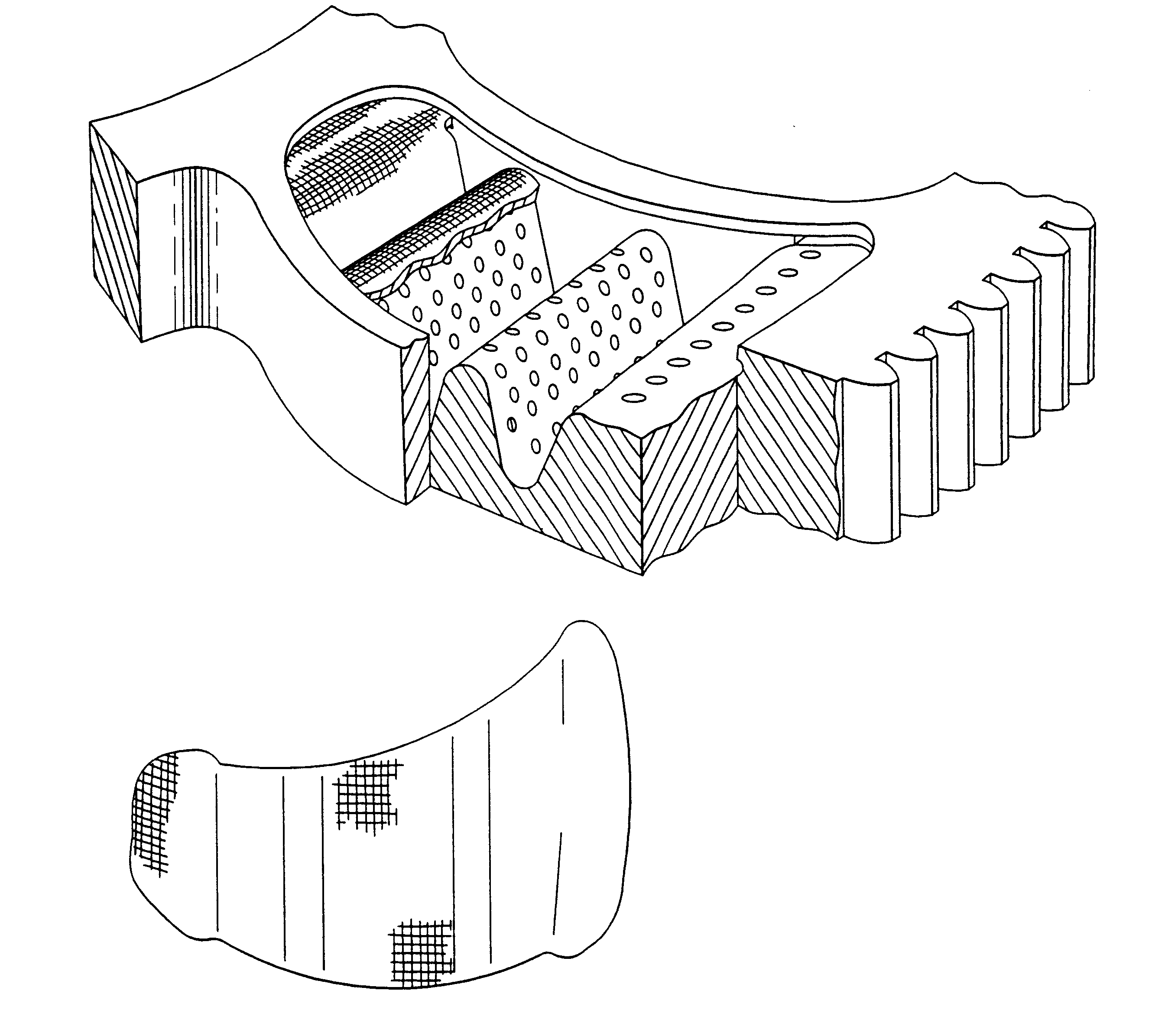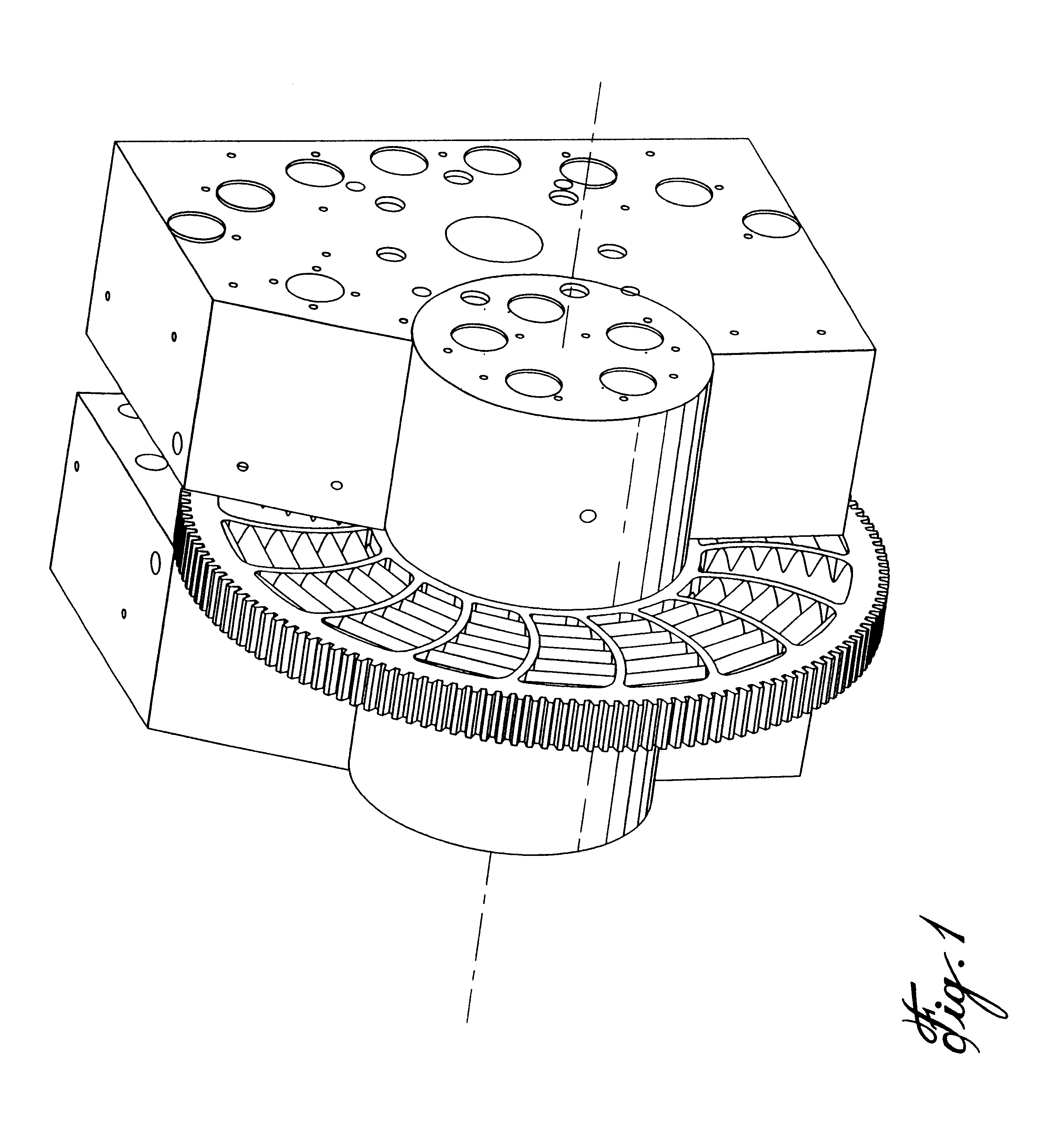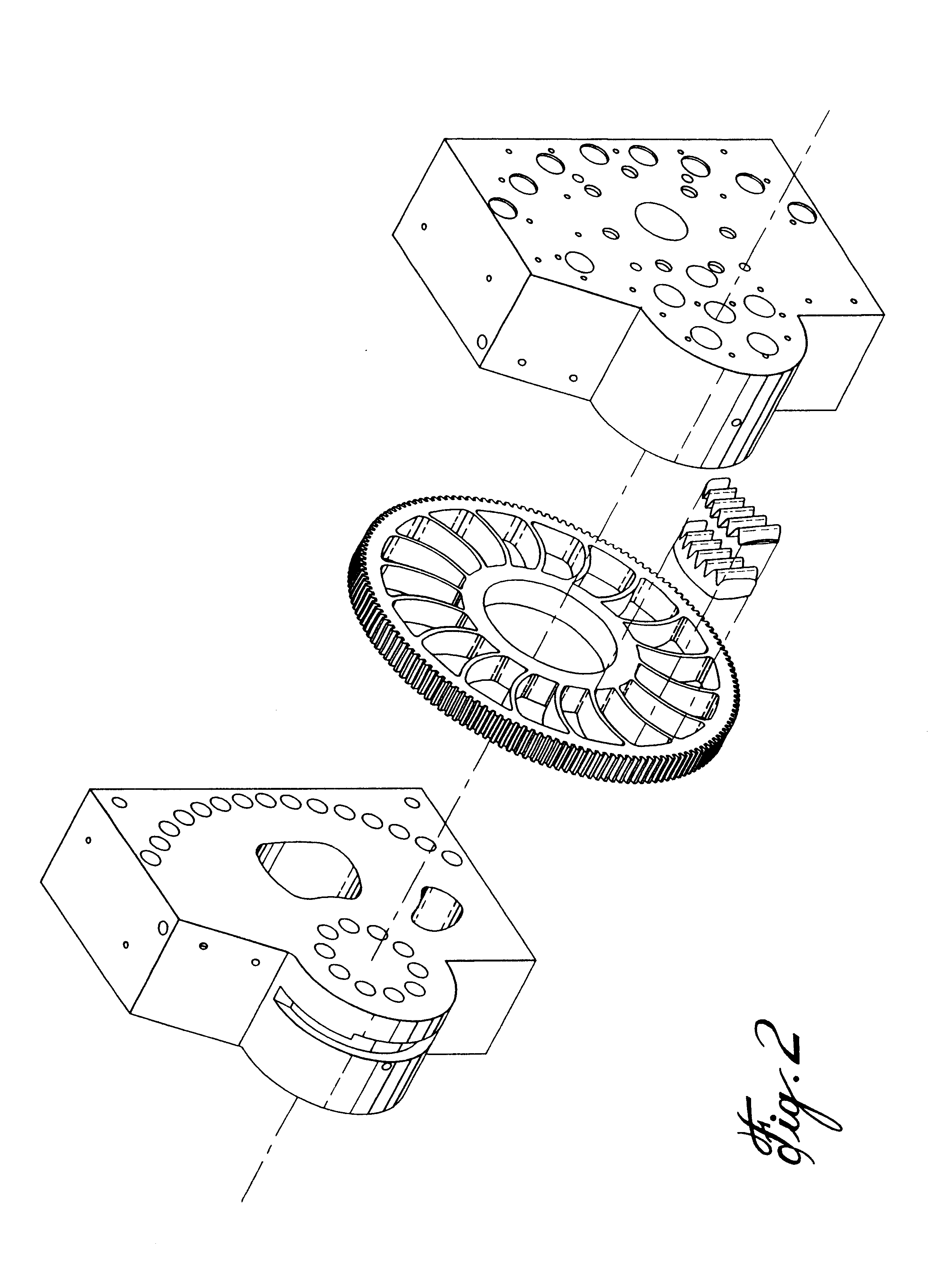Wave filter for rotary filter
a filter and wave technology, applied in the field of wave filters for rotary filters, can solve the problems of poor understanding of rotary filters, low filtration capacity of discs of a given size, high cost of filters, etc., and achieves the effects of easy replacement, easy removal, and cost effectiveness
- Summary
- Abstract
- Description
- Claims
- Application Information
AI Technical Summary
Benefits of technology
Problems solved by technology
Method used
Image
Examples
embodiment
PREFERRED EMBODIMENT
In the most preferred embodiment a rotary screen changer of "D" size was modified according to the invention. The rotary disc which is normally 35 mm thick and 495 mm in diameter is modified by making it 17 mm thicker bringing total thickness to 52 mm. The filter chamber on the disc area 140 mm by 90 mm remains unchanged and the same 200 holes, each with a diameter of 4.8 mm is provided in the bottom of the filter chamber.
The disc filter chambers are machined in an annular zone of a ground disc which has parallel inlet side and outlet side surfaces. The disc has very close tolerances providing flat surfaces parallel to each other. Holes that communicate from one surface to the other are then drilled into the disc forming typically 18 areas, each drilled with a pattern of 200 closely spaced holes of 4.8 mm diameter. The shape of the filter chamber is then machined into the disc, each separate filter chamber in one hole cluster area. Unlike the normal flat bottom d...
PUM
| Property | Measurement | Unit |
|---|---|---|
| pressures | aaaaa | aaaaa |
| diameter | aaaaa | aaaaa |
| thickness | aaaaa | aaaaa |
Abstract
Description
Claims
Application Information
 Login to View More
Login to View More - R&D
- Intellectual Property
- Life Sciences
- Materials
- Tech Scout
- Unparalleled Data Quality
- Higher Quality Content
- 60% Fewer Hallucinations
Browse by: Latest US Patents, China's latest patents, Technical Efficacy Thesaurus, Application Domain, Technology Topic, Popular Technical Reports.
© 2025 PatSnap. All rights reserved.Legal|Privacy policy|Modern Slavery Act Transparency Statement|Sitemap|About US| Contact US: help@patsnap.com



